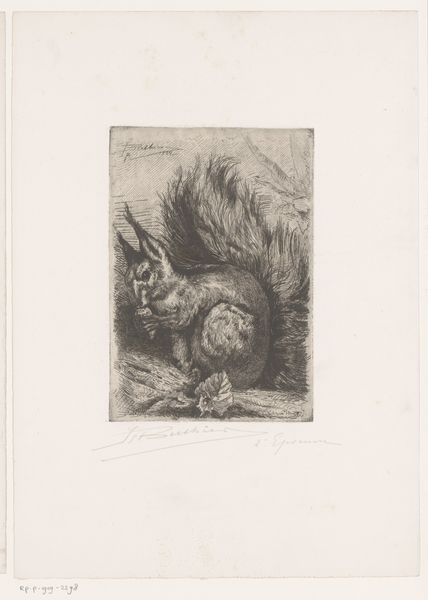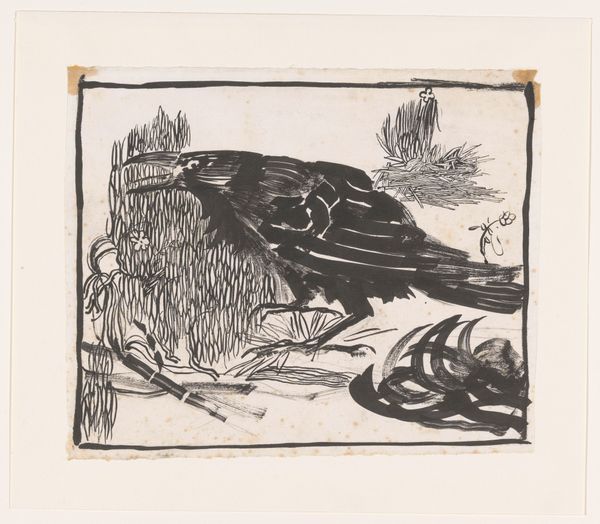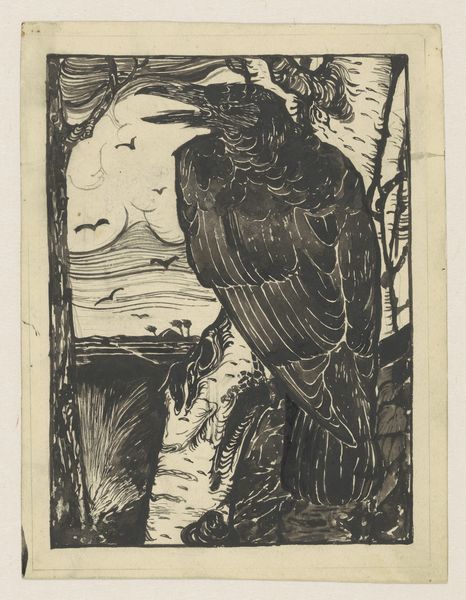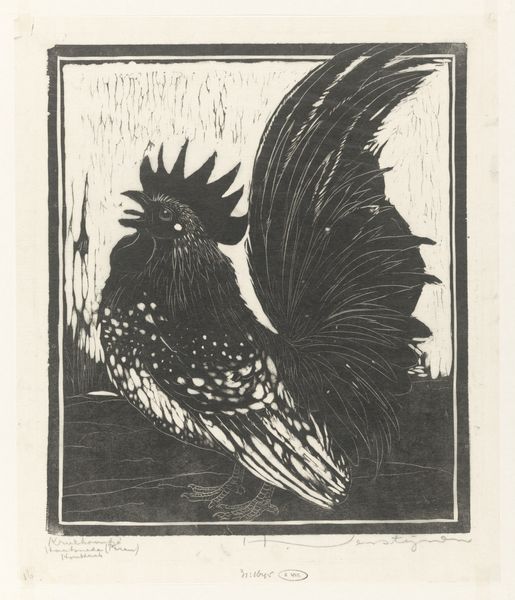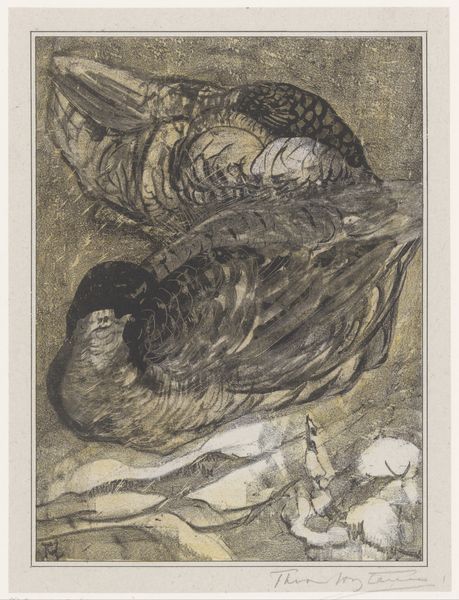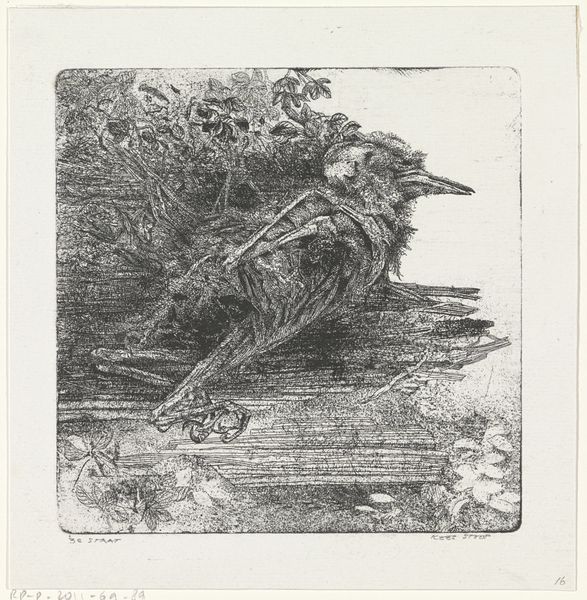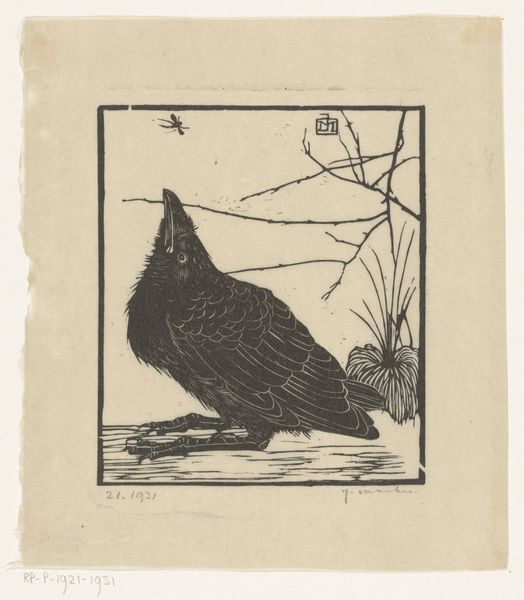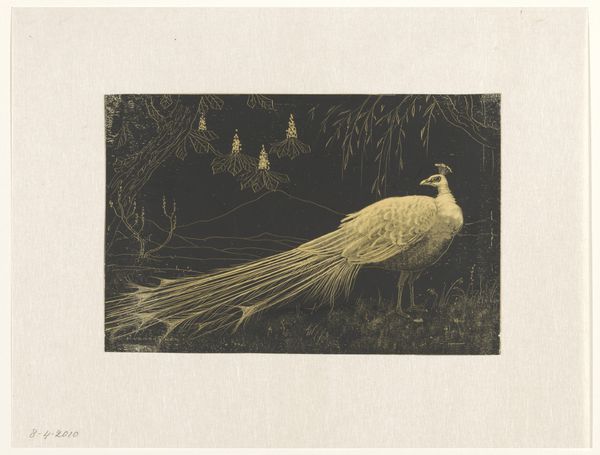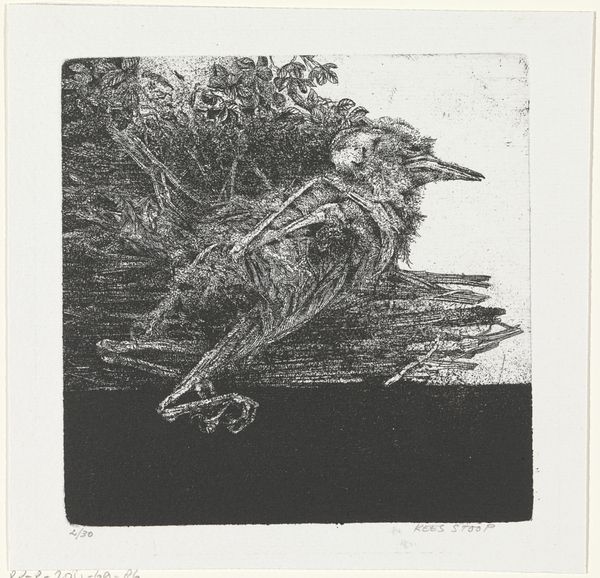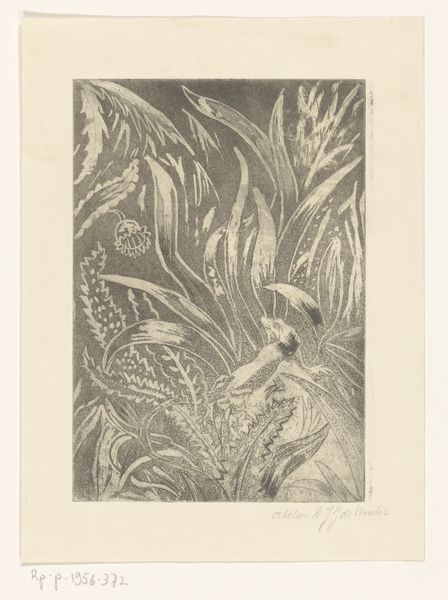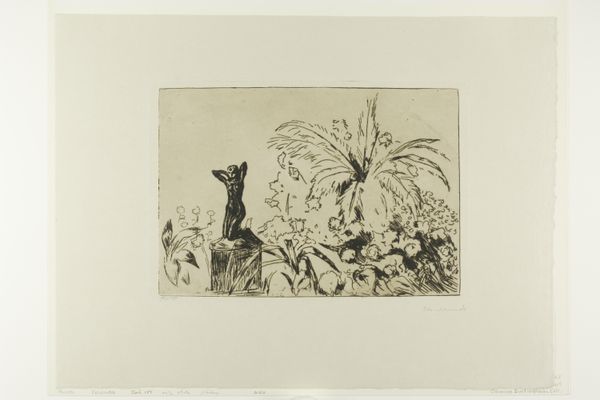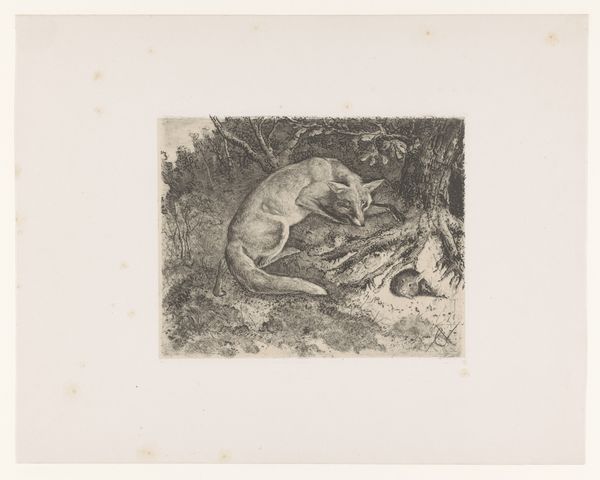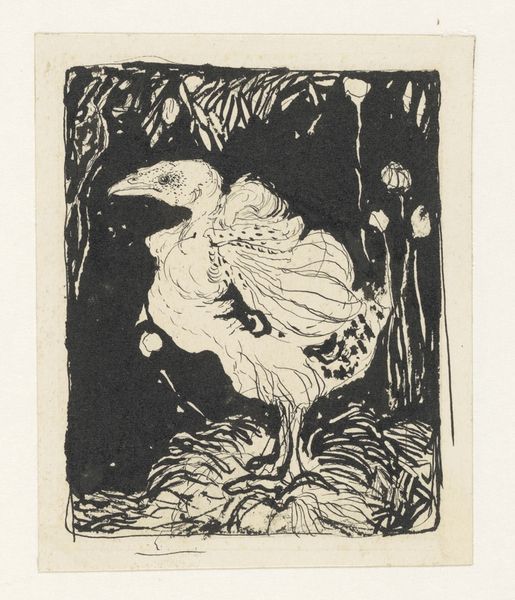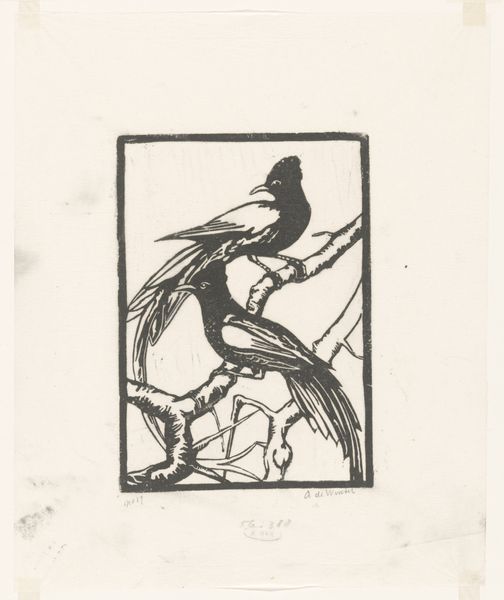
drawing, graphic-art, print, paper, woodcut
#
drawing
#
graphic-art
#
art-nouveau
#
animal
#
dutch-golden-age
# print
#
landscape
#
paper
#
woodcut
#
symbolism
#
realism
Dimensions: height 147 mm, width 125 mm
Copyright: Rijks Museum: Open Domain
Curator: Nestkuiken, dating from 1917, a woodcut by Jan Mankes, has a striking stillness despite the delicate rendering. What are your initial thoughts? Editor: It's deceptively simple. There's an immediate sense of vulnerability radiating from this little bird, juxtaposed with a background that almost feels ominous. It's a bit unsettling. Curator: The bird, the nestling, acts as a potent symbol. In art, birds often signify the soul, the spirit's capacity for flight and transformation, here held in a precarious infancy. Considering Mankes’ oeuvre and the cultural mood of the period, its small scale suggests a profound introspection, typical of Symbolism. Editor: I agree about the vulnerability, but I also read a social dimension. Published amidst the turbulence leading up to the end of the First World War, a tiny, defenseless chick is hardly a celebration of national strength or colonial ambition. Could it be a subtle commentary on the fragility of life during wartime, and a plea for the protection of the innocent? Curator: A compelling argument! Mankes withdrew from the world due to his ill health, so he preferred painting the domestic sphere rather than the great turmoil of history, which certainly imbued his works with a particular character and introspection that aligns well with Symbolist ideals. Perhaps both interpretations hold merit. Editor: This type of image, circulated widely through printmaking, brings the concerns of the everyday into the domestic sphere, thus democratizing artistic messages. The woodcut's very texture, created by human labor, grounds the abstract notion of "fragility" in the tangible world. Curator: Absolutely. There is an immediacy that the woodcut offers. It captures not only the ephemeral, delicate features of the bird but, through its stark black and white contrasts, conveys an eternal struggle for survival and the simple beauty found in the cycle of life. Editor: Mankes provides us with the symbolic weight of hope and survival against all odds through simple yet effective naturalism. Curator: Yes, through the artwork's symbolism and rendering we arrive at an important dialogue between hope and hardship. Editor: It reminds me of art’s potential to bring quiet hope and small acts of resistance into homes worldwide.
Comments
No comments
Be the first to comment and join the conversation on the ultimate creative platform.
